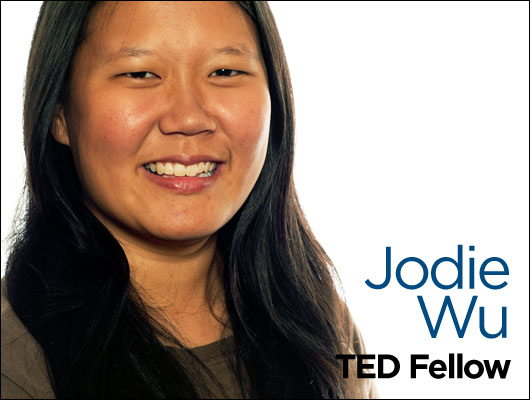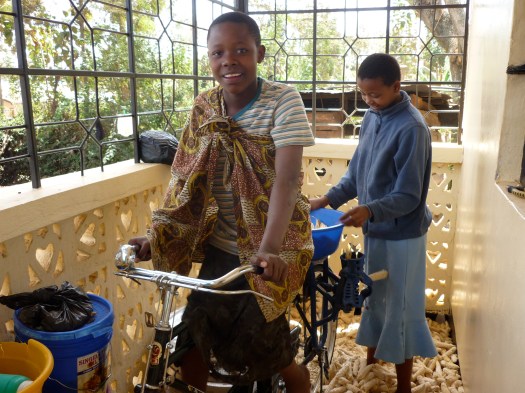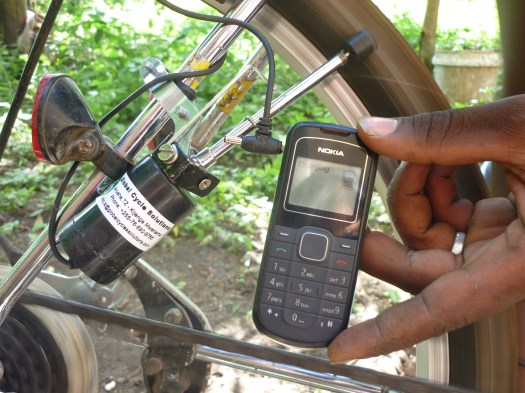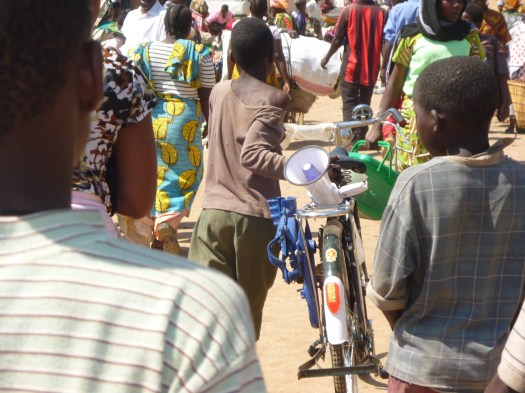
How did you get interested in innovating solutions for problems in developing nations?
I first went to Tanzania as part of MIT’s D-Lab, a multidisciplinary course on development of appropriate technologies, innovation, and creative capacity-building to alleviate poverty. Among the principles taught is the concept of co-creation. Are you familiar with it? There was a phase in development where Westerners were saying, “Oh, if we just give people in developing nations tractors — i.e., technology that worked for us — it’ll be great.” What we didn’t realize was that we were dumping technology into a market where people had no idea how it worked. So now there’s lots of tractors all over, rusting. No spare parts are available because they were designed for the Western world. In contrast, co-creation is the concept of inventing new technologies alongside the people who will use it — having their input as well as ours. When two rivers meet, they meet at a confluence. Co-creation involves making confluent technologies: merging two ideas into one that’s better than either one on its own.
Did you go to Tanzania with an idea in mind, or did you go to identify a problem and come up with a solution?
We had to identify a problem before going, and build community partners, and then come up with the technology or solution that we thought would work. My project was a pedal-powered maize sheller. I actually started with a design from Guatemala, which had been used for the past 20 years. I didn’t invent this technology, but adapted it so it could be packed into a suitcase and moved more easily. But when I got to Tanzania, I saw that the technology was still completely inadequate — expensive, bulky. Why would a smallholder farmer want to own this machine? If he has two acres, he’ll have finished everything he needs to do with it after two days. Alternatively, who would want to lug their maize from place to place to get it shelled?
So we turned the idea on its head. I thought, “Let’s plug the machine into a bicycle — and also use the bicycle as a platform to bring the technology to the people.” So now the technology is shared among the community: it can be biked from place to place. Then when it’s out of season, a new machine can be plugged in, leveraging the bicycle as a tool of empowerment in itself.
At first, we rode the bicycle shellers out to the farms to shell maize. But then people started renting the bike shellers themselves, and some began offering it to others as a service, giving rise to an entrepreneurial model.
How does the bicycle sheller fulfill a need?
The bike sheller serves as a bridge technology. There are actually two extremes in maize shelling technology. Most people beat maize with a stick, or use their fingers. The “high tech” alternative is a large tractor which travels to villages offering to shell maize for 1,000 shillings, equivalent to 60 cents, for every sack filled. But tractor companies don’t want to visit small-holder farmers: they want to go someplace where they can shell 500 sacks of maize, not just 10 or 15. A bike-shelling entrepreneur can shell one sack of maize in 40 minutes, giving him the potential to earn $10 per day.
We think the ideal model would be that one person in the village buys the bicycle, becomes an entrepreneur and shells the maize for the rest of the village. Right now we’re working with village chairmen who would select a youth to be the one to provide the service to the whole village. So it’s his job, and he gets money from each of the villagers. That way, everybody benefits. During the maize harvest, he can use the sheller. During the off season, he can still make a living as a bicycle taxi, for example.
We’ve also developed other technologies to accommodate those who don’t want to be entrepreneurs, but just need useful technology. For instance, it’s not appropriate or comfortable for some people, like grandmothers or little kids, to use a bike sheller. For them, we developed a tiny $2 hand-sheller, which allows them to shell while protecting their fingers.
What else you can do with the bike?
We’re still developing more tools that can be plugged into a bike, but the one closest to being finished is a maize grinder, which basically grinds maize into flour. Another attachment is a rice thresher. We have a bicycle phone charger as well, which charges your phone as you bike from place to place. The possibilities of things you can do with a bicycle are endless, which is why the concept of GCS is so exciting.
What’s your ultimate goal, and when will you feel like you’ve succeeded?
The metric for success in terms of being sustainable as a company is getting sales and breaking even. But for me, it’s about getting the technology into the hands of people who need it. Even if I can get 1 percent penetration in Tanzania, which is still 40,000 farmers, I’d be delighted.
My grand vision is really to develop a portfolio of attachments and be able to achieve worldwide distribution. I want to break even in Tanzania after two years, and then to expand to Uganda, Kenya, and Zambia, and then to be able to travel.
We’re also expanding to the US market for our phone chargers, which were designed from spare bike parts by a 40-year-old Tanzanian inventor, Bernard Kiwia. He’s an amazing man who has made a pedal-powered drill press, pedal-powered hacksaw, a solar water heater out of fluorescent tubes. Selling in the United States would help us bring in revenue faster so we can expand faster elsewhere. And I want to celebrate Bernard’s story, not just to bolster him, but also to publicize our company to a wider audience and make people aware of the technology gap.
Too often, you hear about sustainable development projects that get started, and then the leaders leave and the project dies. I’d like this project to survive beyond my lifetime.
Making sure your project will carry on would require a lot of education and training.
Exactly, and that’s what we’re doing right now. We’ve realized customers need a lot of support, so we’ve trained technicians throughout the country to offer help if anyone has trouble assembling the machine. We’re also working on building relationships, interacting with all the chairmen who have maize farmers in their villages, and letting them know about the product. Last year we didn’t sell very many, but this year sales are suddenly exploding. It’s simply because we’re going into the villages and making personal contact.
What do they make of you, a young Asian-American woman trying to sell them this gadget?
Most of the time, my sales reps, who are Tanzanian, do the community contact, but I encourage my Western colleagues to integrate into local culture as much as possible, living as Tanzanians do. When I visit villages, I do think they’re always shocked and don’t know what to think of me. I actually have become quite fluent in Swahili, so that excites people. Attitudes towards foreigners can be tricky. People can be either excited and honored at your presence, or they think you’re going to donate something, because that’s been the history of Africa in general. Then we have to explain that it’s a business, which can be hard. It kind of helps that I’m Asian, because they don’t know how to perceive me at all. I’m not quite the typical European or American.
What’s the best part of what you do?
I love showing people how bicycles are really tools for empowerment. You can build a full business around a bicycle. You don’t even need a house. Just get a business card, your bicycle, your machine, your phone charger, and your phone — those are all the elements you need to start your own business. So I hope it takes off, but I think the biggest thing is just making sure the technology is accessible. I think a big failure right now in sustainable development initiatives is that there are a lot of technologies being developed at the university level, but they never go anywhere. No matter how good your innovation, if you don’t take it to the people that need it, it won’t have any impact.
What’s it been like to be a TED Fellow?
My favorite part about being a TED Fellow is meeting all the other Fellows. They are all amazing, passionate people, and it was incredible to spend time with all of them. The Senior Fellows were great advisers in preparing us for the TED conference and how to make the most of it, and the Fellows staff are extremely entertaining and supportive. I’m really glad we all got to take the main stage and learn how to give a TED talk. Hopefully, it will come in handy later in life!
There are many aspiring social entrepreneurs out there who are trying to take their passion and ideas to the next level. What one piece of advice would you give them, based on your own experience and successes?
Follow your passion and just dive in to start your company. You may not know what you’re doing, but for sure, you’ll learn and grow. That is, if you have the right attitude! Me, I have no regrets.



Comments (2)
Pingback: Trendanalyse herkansers - Co-creatie bestaat – blogpost 2